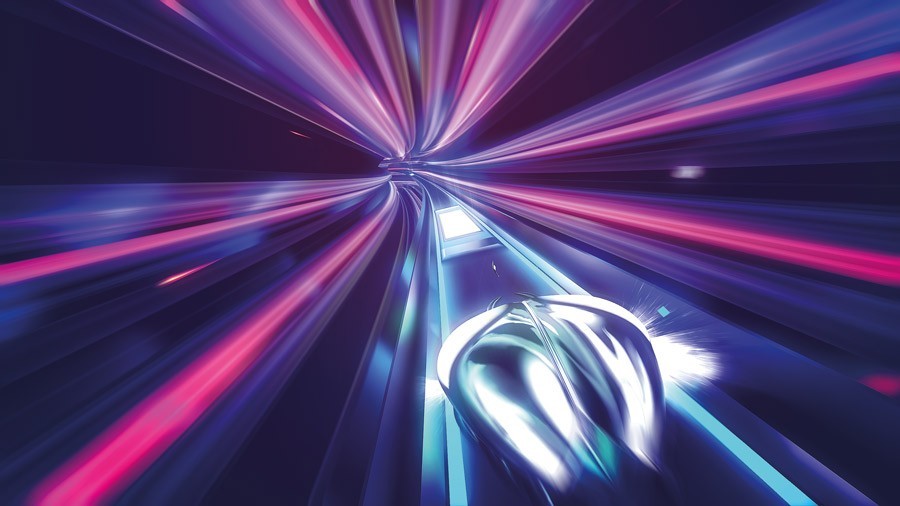Wasn’t virtual reality supposed to be here by now? The idea of putting on some bulky headset to be projected into a digital world already looked passé about 15 years ago. However, in an unexpected turn of events, in 2016 a plethora of slick devices have finally become available to consumers. Enter the Oculus Rift, Samsung Gear VR, and the more game-oriented Playstation VR.
Thumper can be played on a regular TV screen or Playstation VR. Its retro-futurism embeds visions of dystopian virtual realities. The game is set in a dark world, where what looks like a metallic space beetle is propelled at breakneck speed over an infinite rollercoaster ride. This race cannot be stopped, but players will quickly discover that the sparse musical elements being played are deeply meaningful. Players use them as cues to collect objects, anticipate sudden steerings, and survive a veritable rain of crushing obstacles. Precision and rapid reaction times are imperative for avoiding spectacular impacts.
Thumper uses a synergy of minimal audio signals, intense speed, and obscure visual settings. The result is a heightened feeling of danger fused with a brutal challenge that modern games have mostly forgotten about. No easy gratifications are to be found in the alienating, unforgiving repetition cycles of Thumper.
The game was created by a diminutive two-man team that aimed for a confrontational, uncompromising style. Brian Gibson is better known as the bass player of the ultra-kinetic noise rock band Lightning Bolt, which explains the original mix of influences that makes the game stand out. Far from the idea of an ideal, peaceful virtual reality simulation, Thumper is aesthetically the marriage of the Nintendo classic F-Zero with the challenging nature of 1980s’ arcade and contemporary rhythm games. The game will revolutionise your thoughts on the VR experience—if you dare play it.
https://www.youtube.com/watch?v=gZDHLOqD_pM





Comments are closed for this article!